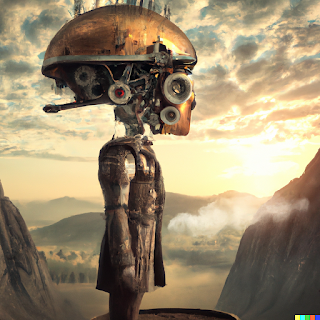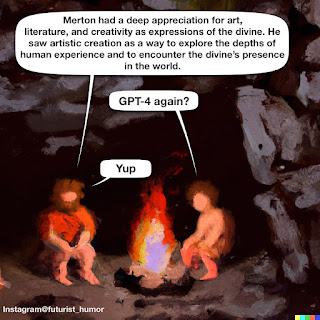Every year or so I want to remind readers of the importance of media literacy, and to caution that both overt and covert influence campaigns are being run continuously through traditional and new media platforms with the intent of altering our perceptions, opinions and ways of thinking. Our brains are the new battlefield, and it's up to each of us to protect them.
*****
Despite the known addictive qualities of these virtual environments, they are seen as acceptable indulgences. Yet, the focus of today's discussion lies not with these recognized digital realities, but rather with the unanticipated, unseen ones that envelop us.
Skilled influencers, operating in the interest of diverse entities, ranging from politicians to military strategists, employ a well-established set of tools and techniques. Their aim? To subtly alter an individual's perception, thereby constructing an alternative reality within their minds. The most concerning aspect is that the individuals affected often remain oblivious to their manipulated mindset until it's too late.
We've all witnessed the unsettling transformation of once content friends or family members into bitter, irritable individuals, incensed by an incessant diet of contentious political talk shows and hostile editorials. These changes aren't accidental; they are the result of meticulously planned campaigns aimed at reorienting an individual's thinking by submerging them into an alternate reality. This sophisticated strategy, designed to reshape individuals' thought patterns, follows a long-standing blueprint:
- Pinpoint your target audience.
- Define your objectives: the ideas, cognitive frameworks, and behaviors you seek to propagate, influence, or modify within your audience.
- Identify your audience's emotional susceptibilities: these act as the conduit for the introduction of an alternative reality.
- Recognize demographic groups most susceptible to psychological manipulation, often the socio-economically disadvantaged, elderly, less educated, and minority groups. These individuals often grapple with dissatisfaction, financial insecurity, and disenfranchisement.
- Harness various communication channels, such as social media, traditional media, and messaging platforms, to synchronize and amplify the key messages appealing to these groups' vulnerabilities and grievances.
- Amplify and disseminate key messages relentlessly until your target audiences reciprocate the messages.
- Understand that truths, half-truths, and outright fabrications can all serve to effectively sway an audience's thinking. The crucial aspect is not consistency or credibility, but sheer volume: inundate your audience with an avalanche of correlated messages.
- Utilize narratives that align with your cause, repeating them frequently to create a defensive barrier against external influences.
- Center your messaging on elevating the "status" of your audience over other groups.
- Highlight and amplify your target audiences' grievances.
- Assign blame for all grievances to educated elites, rival political factions, outsiders, corporations, foreigners, the wealthy, and minorities.
- Denounce all dissenting voices, views, and opinions as biased, fraudulent, corrupt, and unpatriotic.
- Secure a popular spokesperson eager to voice your audience’s grievances, unafraid to make the harsh and uncouth statements that others only dare to think.
- Incite distrust in established institutions, norms, and leaders.
- Advocate simplistic solutions to complex problems and grievances.
- Bestow upon your target audiences “secret” insider information and conspiracy theories that make them feel distinctive, intelligent, and valued.
- Grant your target audience a noble purpose, a mission to champion and defend, offering them a path to status and recognition.
This discussion aims to shed light on the tools, strategies, and techniques employed to craft these alternative realities. By identifying and understanding these mechanisms, we equip ourselves with the knowledge to navigate these digital landscapes with discernment and wisdom.
In this new age of digital realities, it's crucial we remain vigilant of the subtle influences that seek to shape our perception. By doing so, we can guard our minds against unwarranted manipulations, ensuring our engagement with digital realities remains within the realms of informed entertainment and enriching experiences.
Kevin Benedict
Futurist at TCS
View my profile on LinkedIn
Follow me on Twitter @krbenedict
Join the Linkedin Group Digital Intelligence
***Full Disclosure: These are my personal opinions. No company is silly enough to claim them. I work with and have worked with many of the companies mentioned in my articles.



















